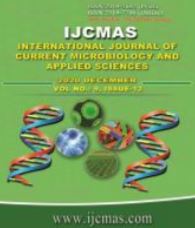


 National Academy of Agricultural Sciences (NAAS)
National Academy of Agricultural Sciences (NAAS)

|
PRINT ISSN : 2319-7692
Online ISSN : 2319-7706 Issues : 12 per year Publisher : Excellent Publishers Email : editorijcmas@gmail.com / submit@ijcmas.com Editor-in-chief: Dr.M.Prakash Index Copernicus ICV 2018: 95.39 NAAS RATING 2020: 5.38 |
A field experiment was conducted on a silty clay loam soil (acidic in reaction and medium in available NPK) during Rabi 2018-19 at Palampur to study the influence of nutrient management practices (Inorganic (RDF), Organic, Natural and Integrated) and varieties (‘Him Palam Alsi-2’, ‘Himani’ and ‘Priyam’) on yield, uptake, quality and soil properties in linseed. Results, revealed that among different nutrient management practices, Integrated Nutrient Management being at par with inorganic practice resulted in significantly higher seed, straw, uptake of NPK and oil yield. However, INM practice being at par with organic has significant advantage over inorganic practice for enhancing microbial count (i.e. bacteria, fungi and actinomycetes) and Microbial Biomass Carbon at harvest with 7.53 per cent increase in seed yield. After the harvest of the crop, significantly higher available nitrogen and phosphorus in soil was recorded under integrated and inorganic. However, INM resulted in significantly highest available potassium in soil. Among varieties, ‘Him Palam Alsi-2’ superseded all other varieties with significantly highest seed, straw, uptake of NPK and oil yield. Soil properties (i.e. microbial and available NP&K at harvest) were not influenced due to varieties.
 |
 |
 |
 |
 |